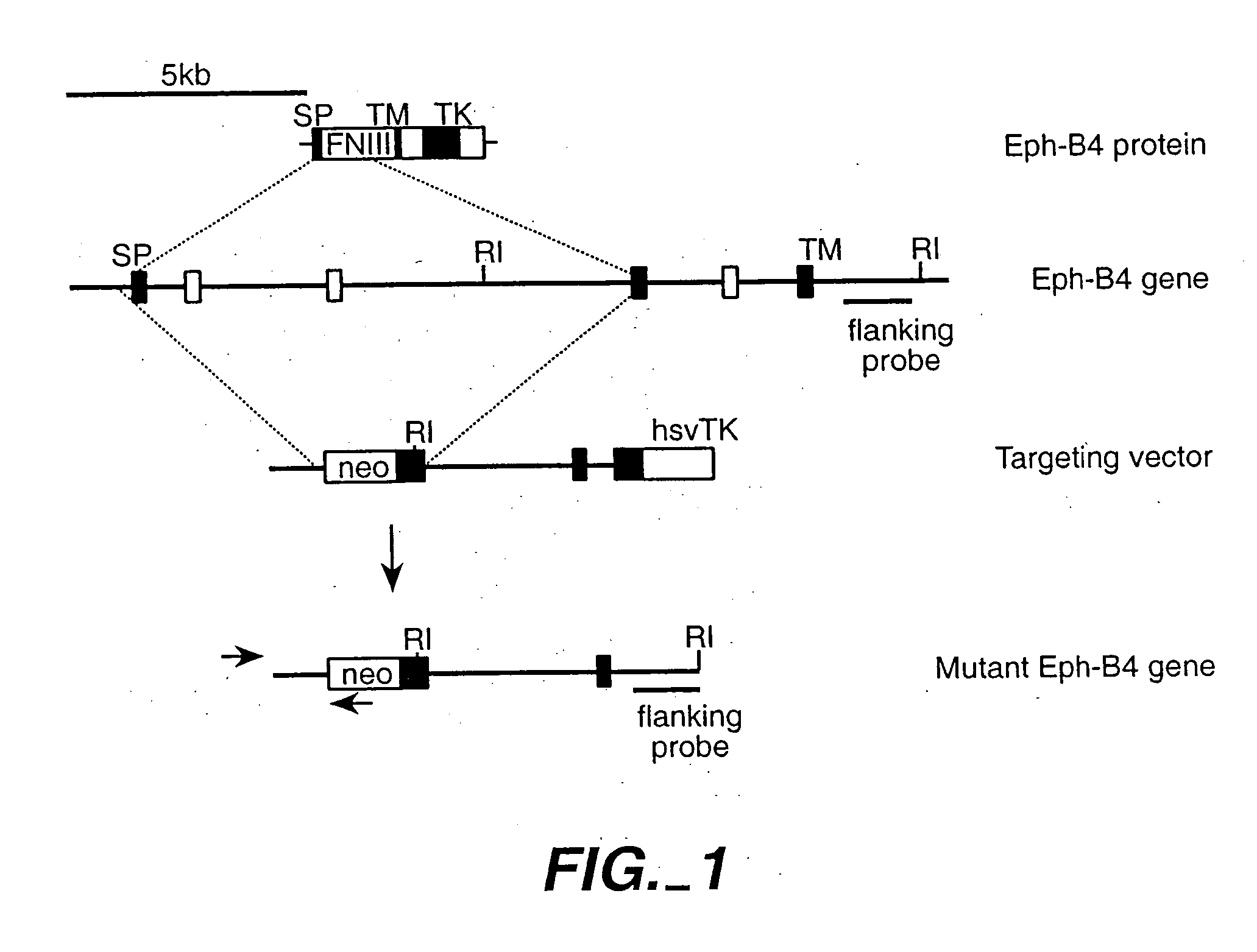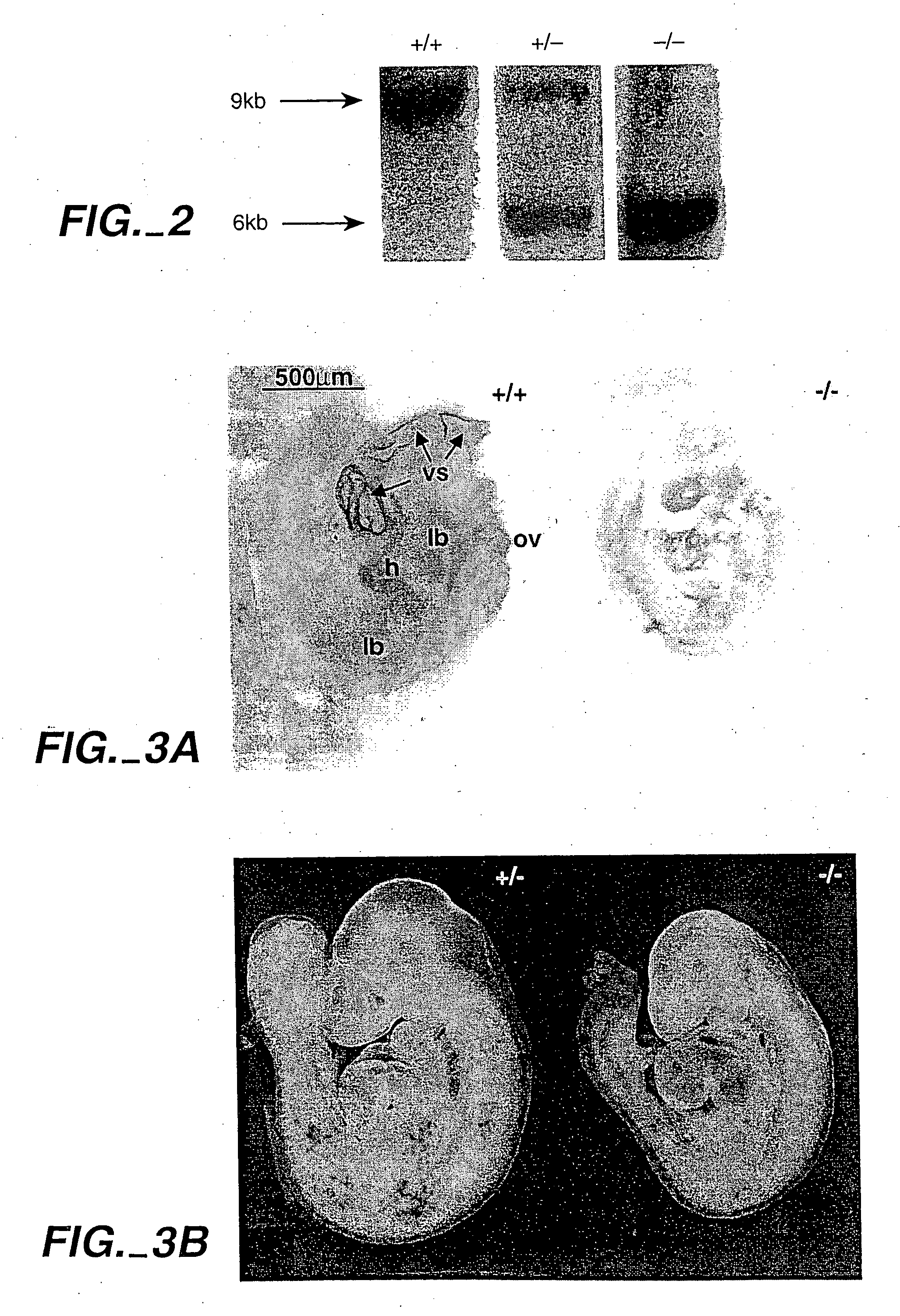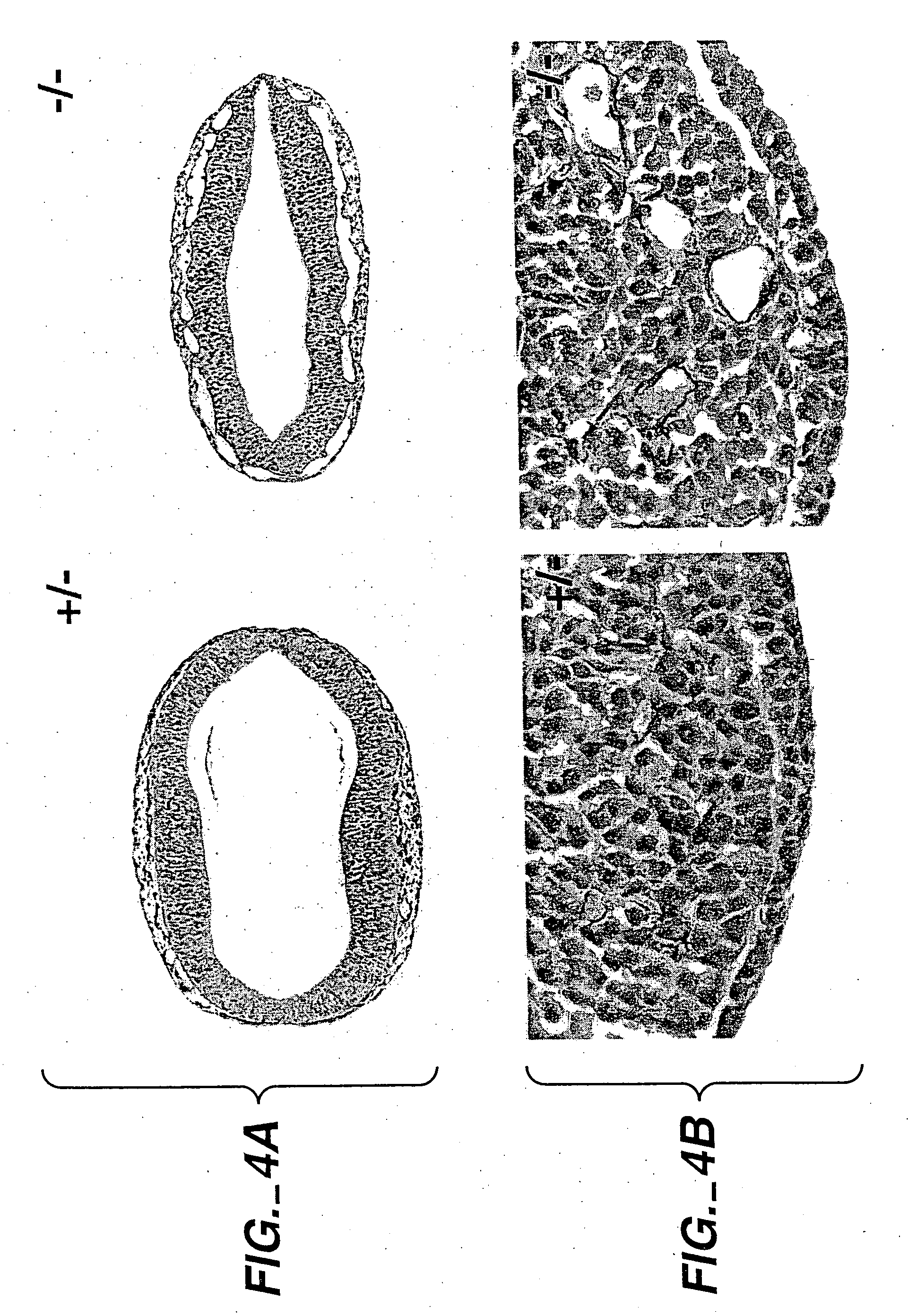Methods for inhibiting angiogenesis by EphB receptor antagonists
a technology of ephb receptor and angiogenesis, which is applied in the direction of extracellular fluid disorder, antibody medical ingredients, metabolic disorders, etc., can solve the problems of perinatal lethality, loss of biological activity, and possible changes in immunogenicity
- Summary
- Abstract
- Description
- Claims
- Application Information
AI Technical Summary
Problems solved by technology
Method used
Image
Examples
Embodiment Construction
[0204] This example shows that EphB4 receptor is essential for promoting angiogenic remodeling of primary capillary networks. Mice that lack EphB4 had a more precocious phenotype and died around E9.5-E10. The heart was dilated and major arteries and veins were severely dysmorphic. Most strikingly, angiogenic remodeling of primary extra- and intra-embryonic capillary networks was completely aborted, and large endothelial sheets assembled to vast, poorly structured sinusoids. Thus, the EphB4 pathway governs angiogenesis at an early stage, when the primary vascular system starts to reorganize through sprouting and intussuception.
[0205] The EphB4 gene was inactivated by transfecting mouse embryonic stem (ES) cells with a replacement vector shown in FIG. 1. Homologous integration occurred with a frequency of approximately 1 in 200 G-418 and gancyclovir resistant ES cell colonies and resulted in the replacement with the neomycin resistance gene of a region of the EphB4 gene encoding the f...
PUM
| Property | Measurement | Unit |
|---|---|---|
| Permeability | aaaaa | aaaaa |
Abstract
Description
Claims
Application Information
 Login to View More
Login to View More - R&D
- Intellectual Property
- Life Sciences
- Materials
- Tech Scout
- Unparalleled Data Quality
- Higher Quality Content
- 60% Fewer Hallucinations
Browse by: Latest US Patents, China's latest patents, Technical Efficacy Thesaurus, Application Domain, Technology Topic, Popular Technical Reports.
© 2025 PatSnap. All rights reserved.Legal|Privacy policy|Modern Slavery Act Transparency Statement|Sitemap|About US| Contact US: help@patsnap.com



